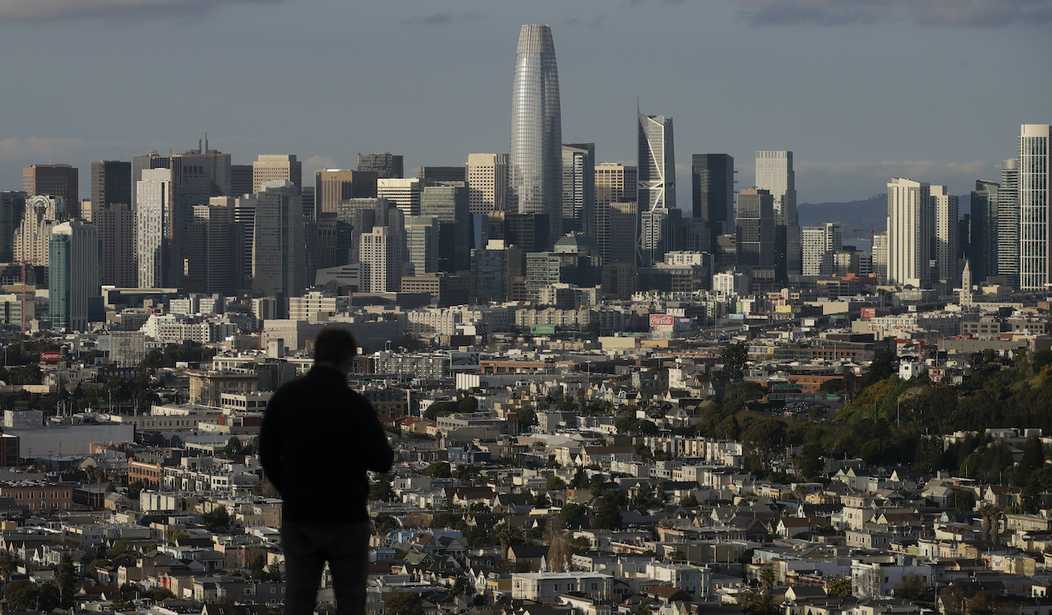I’ve written a little bit about this with regard to San Francisco but it’s a dynamic that is having an impact on cities around the country. Yesterday Thomas Edsall wrote a column about the possibility that the pandemic kicked off an “urban doom loop,” one which could make cities less appealing for some time to come.
The past 30 years “were a golden era for large cities,” Stijn Van Nieuwerburgh, a professor of real estate and finance at Columbia Business School, wrote in November 2022: “A virtuous cycle of improving amenities (educational and cultural institutions, entertainment, low crime) and job opportunities attracted employers, employees, young and old, to cities.”…
In late February and early March 2020, the Covid-19 pandemic hit New York and other population hubs. In Van Nieuwerburgh’s telling, the Covid-19 crisis “triggered a massive migration response. Many households fled urban centers. Most of these Covid migrants moved to the suburbs.”As the pandemic endured and subsequent coronavirus variants prompted employers to postpone return-to-office plans, Van Nieuwerburgh noted, “Covid-induced migration patterns began to take on a more persistent character. Many households transitioned from temporarily renting a suburban home to purchasing a suburban home.”
You probably remember how there were so many people fleeing New York City in the early days of the pandemic that they helped seed outbreaks of the virus around the country. Here’s a bit of what the Washington Post reported in March of 2020:
From the Catskills to Wisconsin’s Door County, communities whose economies usually revolve around seasonal visitors are asking them to stay away. Over the weekend, New Jersey Gov. Phil Murphy (D) urged people with cottages on the Jersey Shore to “stay at your primary residences,” while Massachusetts Gov. Charlie Baker (R) warned that those with property on Nantucket or Martha’s Vineyard should “stay on the mainland.”
Their concerns aren’t exactly unfounded. In Vermont, where ski towns have been “bustling at levels normally seen at peak times during winter holidays,” according to alt-weekly Seven Days, one of the first confirmed coronavirus cases was a man from Westchester County, N.Y., who fled to his vacation home in hopes of avoiding the virus. Within 24 hours of arriving, he had started to show symptoms.
One Long Island resident was quoted by the NY Post saying, “We’re at the end of Long Island, the tip, and waves of people are bringing this s–t. We should blow up the bridges. Don’t let them in.”
This was happening all over the place but it was especially conspicuous around New York City where lots of wealthy people with second homes immediately began acting like doomsday preppers planning to ride out the zombie apocalypse at their cottage in the Hamptons or Vermont or wherever. So many people fled New York, often taking the virus with them, that the Times later reported the state had been the “primary gateway” for outbreaks around the country.
But as Edsall pointed out, what was at first a temporary situation for a lot of people gradually became permanent. As the lockdowns lingered and more and more white collar workers were doing business from home over zoom, many of them realized there was no reason to maintain an expensive apartment in the city. Many of them decided to relocate permanently. And that in turn has a major impact on cities.
Scholars are increasingly voicing concern that the shift to working from home, spurred by the Covid pandemic, will bring the three-decade renaissance of major cities to a halt, setting off an era of urban decline. They cite an exodus of the affluent, a surge in vacant offices and storefronts, and the prospect of declining property taxes and public transit revenues.
Just to pick on one of these threads, public transit is basically designed to bring people in and out of downtown for work and for shopping. But what if you no longer need to go downtown to work or only need to go 2-3 days a week? On top of that, what if so many people stop going downtown to work that there’s not as much foot traffic on the streets to support all of the shops and restaurants that were built to cater to officer workers. And as shops and restaurants close, there’s not as much draw for people to come downtown in the evenings or on weekends. It’s a vicious cycle and eventually you get a commercial real estate crash like the one in San Francisco and along with it a major drop in the number of people riding public transportation.
Nicholas Bloom, an economist at Stanford, described some of the economic forces at work in an email:
In big cities like New York and San Francisco we estimate large drops in retail spending because office workers are now coming into city centers typically 2.5 rather than five days a week. This is reducing business activity by billions of dollars — less lunches, drinks, dinners and shopping by office workers. This will reduce City Hall tax revenues.
Compounding the problem, Bloom continued:
Public transit systems are facing massive permanent shortfalls as the surge in working from home cuts their revenues but has little impact on costs (as subway systems are mostly a fixed cost). This is leading to a permanent 30 percent drop in transit revenues on the New York subway, San Francisco BART, etc.
These difficulties for cities will not go away any time soon. Bloom provided data showing strong economic incentives for both corporations and their employees to continue the work-from-home revolution if their jobs allow it.
The advantages to commuters is obvious. Instead of spending an hour or two stuck in traffic every work day and paying for the gas to do so, they commute from the bedroom to the home office for free. From the employees side of things the advantages are even bigger. As I’ve written before, the single biggest line item for any major corporation after salaries is office space. Companies often spend millions on long-term contracts for a decent space. But if workers are coming in about half the time, that means on any given day you probably need 1/2 or 2/3 the amount of space you did previously (It won’t be half because more people are out on Fridays and Mondays than in the middle of the week.) But I know from speaking to people who work for major corporations that the executives look at cutting 1/3 to 1/2 of their rental budget and that’s millions and millions of savings per year for a company that has offices in major cities around the country. They save all that money and their employees are happier. It’s a win-win situation for the company and a lose-lose for retail landlords and the downtown areas of major cities.
And that’s how you get to the idea of an urban doom loop. A trio of academic experts in real estate economics published a paper in September titled “Work From Home and the Office Real Estate Apocalypse.” One of the authors, Arpit Gupta of NYU, told Edsall the following:
“Our research,” Gupta wrote by email,
emphasizes the possibility of an “urban doom loop” by which decline of work in the center business district results in less foot traffic and consumption, which adversely affects the urban core in a variety of ways (less eyes on the street, so more crime; less consumption; less commuting) thereby lowering municipal revenues and also making it more challenging to provide public goods and services absent tax increases. These challenges will predominantly hit blue cities in the coming years.
Together, the three academics predict the value of commercial real estate will drop about $400 billion dollars nationwide. But beyond the dollars and cents, there’s also the issue of how downtown feels as there are fewer commuters and workers and relatively more homeless people. Tracey H. Loh of the Brookings institution wrote:
both the visibility and ratio of people in crisis relative to those engaged in commerce (whether working or shopping) has changed in a lot of U.S. downtowns, which has a big impact on how being downtown “feels” and thus perceptions of downtown. These negative perceptions have become a real barrier to further recovery and are also shaping local elections, especially out West, where homelessness is worse, such as last year’s Seattle mayoral election or the recent L.A. mayoral election.
What will the progressive mayors and city council members of all of these cities do if this pattern continues? Less income from taxes means less money to deal with the problems cities face. But raising taxes isn’t an option because that would only exacerbate the exodus. After all it’s the wealthy white collar workers who now have the option of working remotely.
Thirty years ago (1992) there was essentially no internet that anyone outside academia cared about. But in a fairly short time the internet began to undercut mom and pop stores and eventually big box stores around the country in favor of Amazon and other online retailers. Now we’ve reached the point where the internet can replace commuting for a lot of people. This was inevitable but the pandemic really put the shift into fast forward and now we’re seeing the impact this is having on cities.
There are just a lot fewer requirements to live in an urban area than their used to be. On the other hand, there are some things which we learned do not work well remotely. One of those is education. So society isn’t going to vanish in the urban doom loop but it is going to change in ways that may make cities far less appealing places to live and work.







Join the conversation as a VIP Member